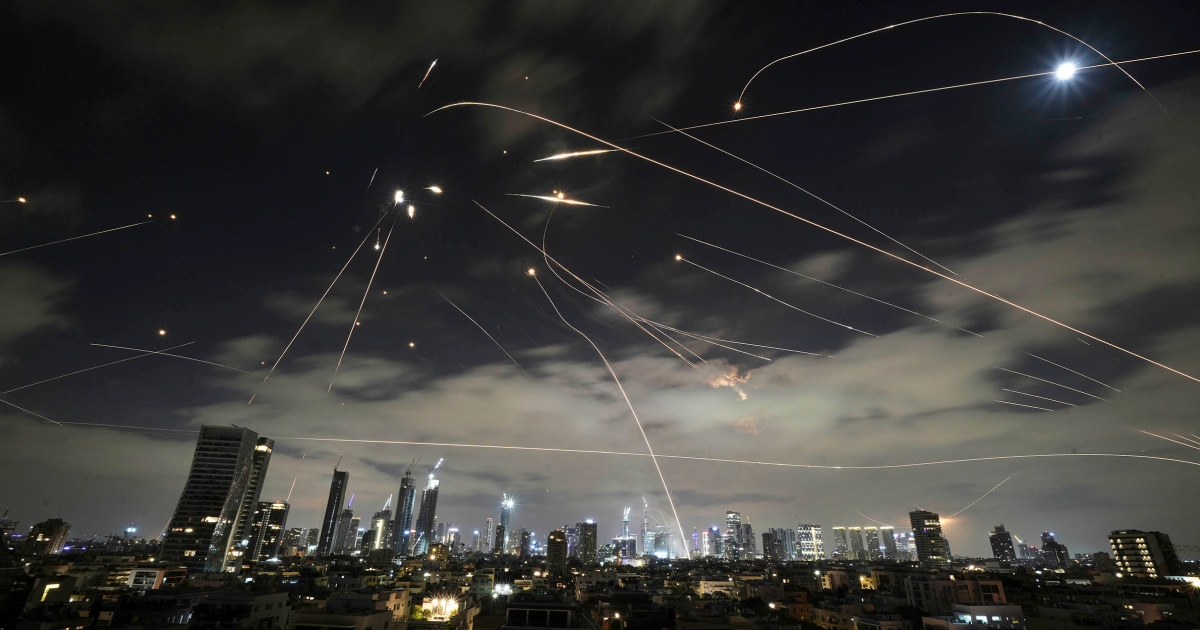
Speaking to Parliament on Monday, Iranian President Masoud Pezeshkian said Iran is not seeking nuclear weapons but has the right to pursue nuclear energy and research, repeating its long-standing official claim.
The escalating conflict is looming over President Donald Trump, whose administration had urged Israel to hold off on the attack as it pursued nuclear talks with Iran that have since been called off.
“I hope there’s going to be a deal. I think it’s time for a deal, and we’ll see what happens. But sometimes they have to fight it out,” Trump told reporters Sunday before heading to Canada for a summit of the Group of Seven major economies, where the Israel-Iran conflict will be high on the agenda.
The United States has distanced itself from the Israeli military campaign, saying it was carried out unilaterally. But Trump gave Israel tacit approval and provided limited intelligence and other support, multiple current and former U.S. officials told NBC News, though he rejected an Israeli plan to assassinate Iran’s supreme leader, Ayatollah Ali Khamenei.
Israeli Prime Minister Benjamin Netanyahu told Fox News on Sunday that the U.S. and Israel have been “fully coordinated” on the attacks, and that American pilots are shooting down Iranian drones and U.S. air defense systems are helping to protect Tel Aviv.
The U.S. has warned Iran, which says Israel could not have carried out the attack without U.S. assistance, not to target U.S. personnel or assets in the region.
The Israeli attacks have dealt a major blow to Iran’s military leadership, as well as its nuclear program. The Israel Defense Forces said it had killed at least nine of Iran’s nuclear scientists and experts, and Iran also confirmed the deaths of its two top generals.
Rafael Grossi, director of the International Atomic Energy Agency, said Monday that there had been no additional damage at Iran’s crucial Natanz uranium enrichment facility since it was attacked by Israel on Friday, and that the level of off-site radioactivity “has remained unchanged and at normal levels.”
Off-site radiation levels also remain unchanged at the Isfahan nuclear research complex, where four critical buildings were damaged, he said.
Grossi said there was no apparent damage at the Fordo uranium enrichment facility, the Bushehr nuclear power plant or the Khondab heavy water reactor, which is under construction.
But Israel targeted more than just nuclear facilities. Iran’s stockpile of ballistic missiles with warheads, estimated at about 2,000 before the current conflict, is likely to be significantly depleted, an Israeli military official told NBC News.
In the early hours of the Israeli offensive, an intelligence-led operation, aided by drones and clandestine agents who had deeply infiltrated Iran, also targeted Tehran’s rocket launchers and leadership, according to a Israeli government official briefed on the matter who cannot speak publicly about intelligence.
Information about a gathering of Iranian commanders was used to kill key military leaders and disrupt Tehran’s command and control structure, the official said, echoing Israel’s strategy behind the exploding pagers that in September killed or wounded much of the top leadership of the Iranian-backed Lebanese militant group Hezbollah.
Despite the tactical success of the first few days, the “job is not done,” an Israeli military official said.
“Iran was worked for decades to disperse their nuclear program, to put it underground, to put it in different sites to try and hide it,” the official said.